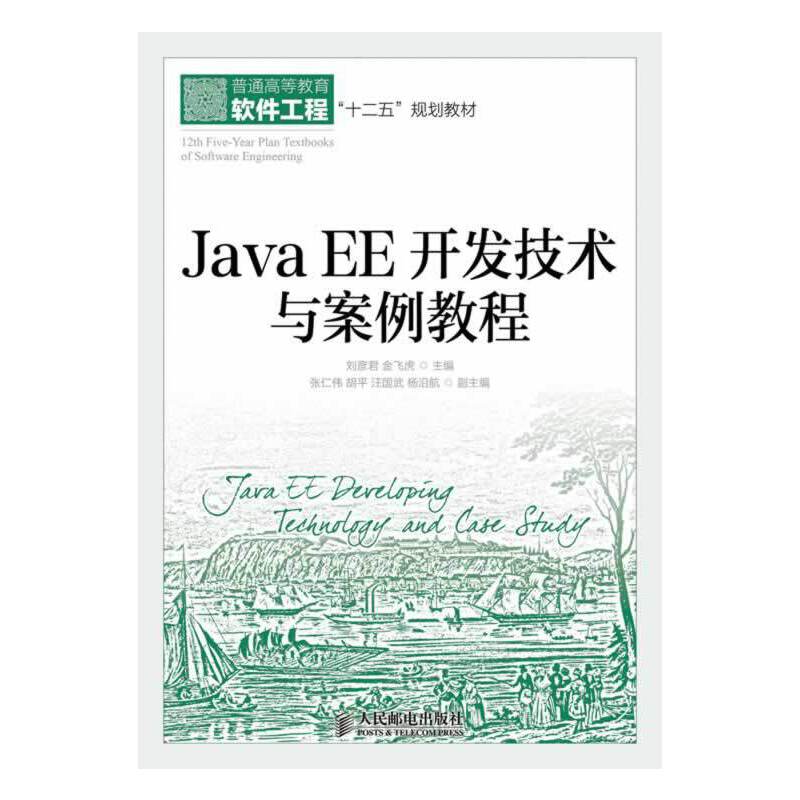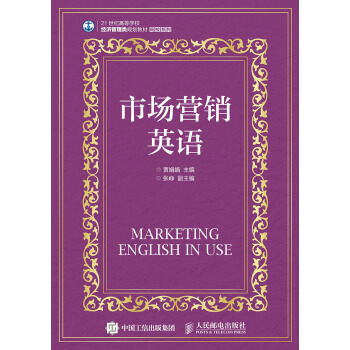金融专业英语 / 21世纪高等院校经济管理类规划教材
¥46.00定价
作者: 刘铁敏
出版时间:2015-07
出版社:人民邮电出版社
- 人民邮电出版社
- 9787115390424
- 1-6
- 185011
- 46212129-4
- 平装
- 16开
- 2015-07
- 456
- 306
- 文学
- 外国语言文学
- H31
- 金融
- 本科
内容简介
刘铁敏主编的《金融专业英语(21世纪高等院校经济管理类规划教材)》为培养既精通现代金融知识,又能运用英语从事金融业务的复合型人才而编写。
全书正文共五部分,分为十三章。第一章至第三章为第一部分,主要阐述货币、货币制度、政治与经济;第四章至第六章为第二部分,主要阐述中国中央银行、商业银行业务及银行和金融机构监管的知识;第七章至第九章为第三部分,主要阐述证券、外汇交易、期货和期权等证券投资及风险管理的知识;第十章至第十一章为第四部分,主要阐述保险基本原理、主要保险业务;第十二章至第十三章为第五部分,主要阐述金融函电的基本特点与写作、金融函电的主要应用实例。本书附录为分类的专业词汇表。
为便于教学和学习,我们准备了配套的教学课件、部分正文译文、习题参考答案、模拟试卷等辅助教学/学习资料,索取方式参见“配套资料索取说明”。
本书为本科院校金融专业英语课程教材,因本书主体内容和金融学(货币银行学)课程内容相同,故而也可作为金融学课程双语授课教材。
全书正文共五部分,分为十三章。第一章至第三章为第一部分,主要阐述货币、货币制度、政治与经济;第四章至第六章为第二部分,主要阐述中国中央银行、商业银行业务及银行和金融机构监管的知识;第七章至第九章为第三部分,主要阐述证券、外汇交易、期货和期权等证券投资及风险管理的知识;第十章至第十一章为第四部分,主要阐述保险基本原理、主要保险业务;第十二章至第十三章为第五部分,主要阐述金融函电的基本特点与写作、金融函电的主要应用实例。本书附录为分类的专业词汇表。
为便于教学和学习,我们准备了配套的教学课件、部分正文译文、习题参考答案、模拟试卷等辅助教学/学习资料,索取方式参见“配套资料索取说明”。
本书为本科院校金融专业英语课程教材,因本书主体内容和金融学(货币银行学)课程内容相同,故而也可作为金融学课程双语授课教材。
目录
Part One Money and Economics
Chapter 1 Money
Learning Objectives
Key Topics
Section 1.1 What is Money?
1.1.1 History of money
1.1.2 Meaning of Money
Section 1.2 Functions of Money
1.2.1 Medium of Exchange
1.2.2 Unit of Account
1.2.3 Store of Value
1.2.4 Standard of Deferred Payment
Section 1.3 Evolution of the Payment System
1.3.1 The forms of money
1.3.2 Are we moving to a cashless society?
Section 1.4 Measuring Money
1.4.1 Theoretical and Empirical Definition of Money
1.4.2 The federal reserve's monetary aggregates
1.4.3 Money supply
Section 1.5 Money Policy
Notes
Exercises
Additional Readings
Chapter 2 Financial Markets
Learning Objectives
Key Topics
Section 2.1 What is Financial Market?
2.1.1 Definition of financial market
2.1.2 Constituents of financial market
Section 2.2 Functions of Financial Markets
2.2.1 Intermediary Functions
2.2.2 Financial Functions
Section 2.3Currency (Money) markets
2.3.1 Participants
2.3.2 Functions of the money market
2.3.3 Common money market instruments
Section 2.4 Capital markets
2.4.1 Deeply view to capital market
2.4.2 Examples of capital market transactions
2.4.3 Raising Capitals
Section 2.5 Derivative products market
2.5.1 Future Contracts
2.5.2 Forward Contracts
2.5.3 Optional contracts
Notes
Exercises
Additional Readings
Chapter 3 Polities and ?Economics
Learning Objectives
Key Topics
Section 3.1 Macroeconomics & Polities
3.1.1 Games between policy makers and voters
3.1.2 Games between Policy Makers
Section 3.2 An General Perspective on the Political Economy of ""Big Change""
3.2.1 The Social-Political Context and Co-Evolution
3.2.2 Embeddedness
3.2.3 The Dilemma of Knowledge as a Product and a Resource
3.2.4 The Global perspective on the evolution
3.2.5 Evolutionary Social-Economic ""intricacy""
3.2.6 The Initiation of Self Re-Enforcing Growth
Section 3.3 Explosive Change of evolution and Communitarian Collective Ownership
3.3.1 The Fall - Variety Constraining Order
3.3.2 Self Organization and Economics
3.3.3 Communitarian[12] Collective Ownership and Strategic Networks
Notes
Exercises
Additional Readings
Part Two Banking Industry in China
Chapter 4 Central Bank-PBC
Learning Objectives
Key Topics
Section 4.1 The Reform of PBC
4.1.1 Definition of 'Central Bank'
4.1.2 Transformation of the PBC
4.1.3 Reform the Current Financial Structure
Section 4.2 The Functions of PBC
4.2.1 The Reason for Transformation
4.2.2 The Biggest Change of the Functions of the PBC
4.2.3 The Functions of PBC
Section 4.3 The Instruments of Central Banking
4.3.1 Open Market Operation
4.3.2 Reserve Requirements
4.3.3 Rediscount
Notes
Exercises
Additional Readings
Chapter 5 Commercial Banks
Learning Objectives
Key Topics
Section 5.1 Introduction
Section 5.2 What a Bank Is?
5.2.1 The Role of the Banking Sector in China
5.2.2 Vigorous Development of the Banking Sector
5.2.3 Increased Openness of the Banking Sector
Section 5.3 Intermediary Services
5.3.1 Settlement-Payments and Funds Transfer
5.3.2 Plastic Money
5.3.3 International Settlement
Section 5.4 Loans
5.4.1 Definition and Categories of Loans
5.4.2 The Credit Process
5.4.3 Post-Disbursement Management
Section 5.5 Banking on the Internet
5.5.1 Backgrounds
5.5.2 On-Line Banking Products
5.5.3 The Future Prospects of On-Line Banking
Notes
Exercises
Additional Readings
Chapter 6 Supervision of Banking and Financial Institutions
Learning Objectives
Key Topics
Section 6.1 Importance and Objectives?of Banking Supervision
Part Three Financial Instruments and Foreign Exchange
Part Four Insurance
Part Five Financial Letters
Special Terms
主要参考文献
配套资料索取说明
Chapter 1 Money
Learning Objectives
Key Topics
Section 1.1 What is Money?
1.1.1 History of money
1.1.2 Meaning of Money
Section 1.2 Functions of Money
1.2.1 Medium of Exchange
1.2.2 Unit of Account
1.2.3 Store of Value
1.2.4 Standard of Deferred Payment
Section 1.3 Evolution of the Payment System
1.3.1 The forms of money
1.3.2 Are we moving to a cashless society?
Section 1.4 Measuring Money
1.4.1 Theoretical and Empirical Definition of Money
1.4.2 The federal reserve's monetary aggregates
1.4.3 Money supply
Section 1.5 Money Policy
Notes
Exercises
Additional Readings
Chapter 2 Financial Markets
Learning Objectives
Key Topics
Section 2.1 What is Financial Market?
2.1.1 Definition of financial market
2.1.2 Constituents of financial market
Section 2.2 Functions of Financial Markets
2.2.1 Intermediary Functions
2.2.2 Financial Functions
Section 2.3Currency (Money) markets
2.3.1 Participants
2.3.2 Functions of the money market
2.3.3 Common money market instruments
Section 2.4 Capital markets
2.4.1 Deeply view to capital market
2.4.2 Examples of capital market transactions
2.4.3 Raising Capitals
Section 2.5 Derivative products market
2.5.1 Future Contracts
2.5.2 Forward Contracts
2.5.3 Optional contracts
Notes
Exercises
Additional Readings
Chapter 3 Polities and ?Economics
Learning Objectives
Key Topics
Section 3.1 Macroeconomics & Polities
3.1.1 Games between policy makers and voters
3.1.2 Games between Policy Makers
Section 3.2 An General Perspective on the Political Economy of ""Big Change""
3.2.1 The Social-Political Context and Co-Evolution
3.2.2 Embeddedness
3.2.3 The Dilemma of Knowledge as a Product and a Resource
3.2.4 The Global perspective on the evolution
3.2.5 Evolutionary Social-Economic ""intricacy""
3.2.6 The Initiation of Self Re-Enforcing Growth
Section 3.3 Explosive Change of evolution and Communitarian Collective Ownership
3.3.1 The Fall - Variety Constraining Order
3.3.2 Self Organization and Economics
3.3.3 Communitarian[12] Collective Ownership and Strategic Networks
Notes
Exercises
Additional Readings
Part Two Banking Industry in China
Chapter 4 Central Bank-PBC
Learning Objectives
Key Topics
Section 4.1 The Reform of PBC
4.1.1 Definition of 'Central Bank'
4.1.2 Transformation of the PBC
4.1.3 Reform the Current Financial Structure
Section 4.2 The Functions of PBC
4.2.1 The Reason for Transformation
4.2.2 The Biggest Change of the Functions of the PBC
4.2.3 The Functions of PBC
Section 4.3 The Instruments of Central Banking
4.3.1 Open Market Operation
4.3.2 Reserve Requirements
4.3.3 Rediscount
Notes
Exercises
Additional Readings
Chapter 5 Commercial Banks
Learning Objectives
Key Topics
Section 5.1 Introduction
Section 5.2 What a Bank Is?
5.2.1 The Role of the Banking Sector in China
5.2.2 Vigorous Development of the Banking Sector
5.2.3 Increased Openness of the Banking Sector
Section 5.3 Intermediary Services
5.3.1 Settlement-Payments and Funds Transfer
5.3.2 Plastic Money
5.3.3 International Settlement
Section 5.4 Loans
5.4.1 Definition and Categories of Loans
5.4.2 The Credit Process
5.4.3 Post-Disbursement Management
Section 5.5 Banking on the Internet
5.5.1 Backgrounds
5.5.2 On-Line Banking Products
5.5.3 The Future Prospects of On-Line Banking
Notes
Exercises
Additional Readings
Chapter 6 Supervision of Banking and Financial Institutions
Learning Objectives
Key Topics
Section 6.1 Importance and Objectives?of Banking Supervision
Part Three Financial Instruments and Foreign Exchange
Part Four Insurance
Part Five Financial Letters
Special Terms
主要参考文献
配套资料索取说明




